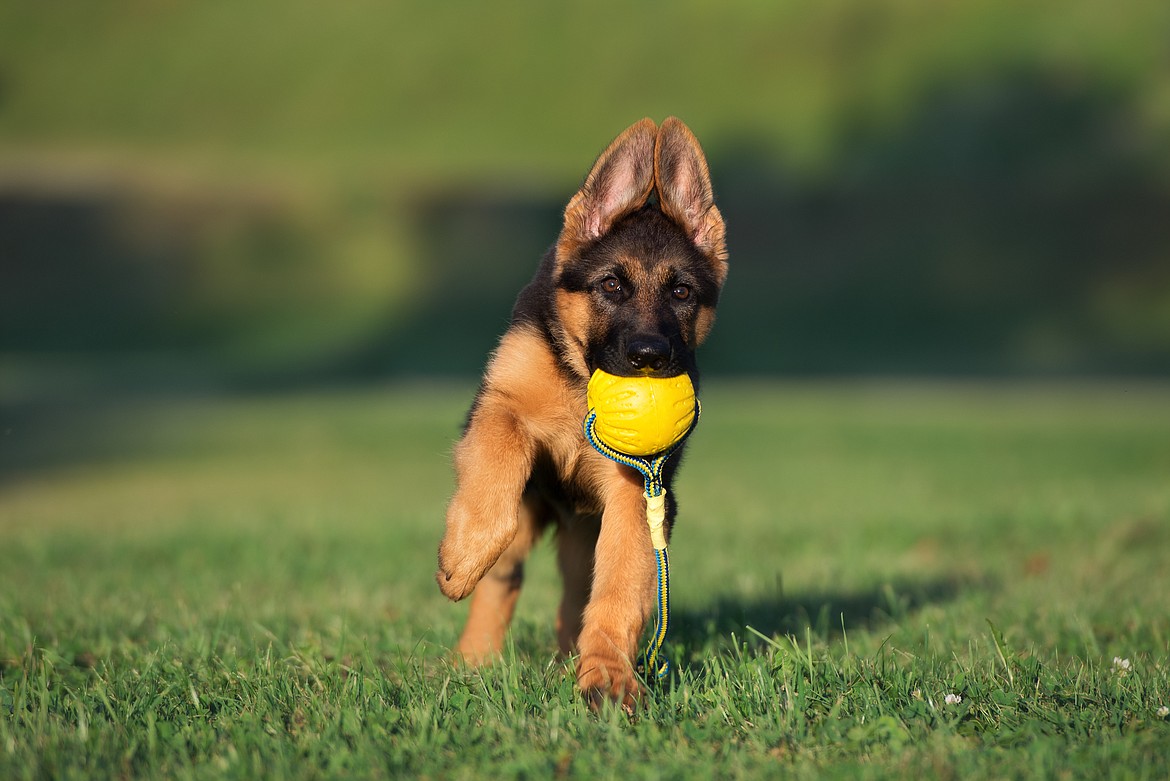The puppy timeline: Physical and mental changes
Raising adorable puppies can be as challenging as it is exciting, especially because of the speed at which they are developing, both physically and mentally. So, knowing the general timeline of their growth can help owners prepare to meet a puppy’s evolving needs.
Harmony Diers, a veterinary technician at the Texas A&M School of Veterinary Medicine & Biomedical Sciences, says a puppy’s growth timeline includes five major stages: neonatal, transitional, socialization, juvenile, and adolescence.
The neonatal stage roughly lasts for the first two weeks of a puppy’s life and is marked by a puppy’s inability to do very much.
“In the neonatal stage, puppies are completely dependent on their mother, especially for nourishment,” Diers said. “While puppies cannot support their own body weight, cannot hear or see because their ears and eyes are still closed, and cannot bark, they can crawl, feel, smell, and vocalize in the form of grunting.”
Once puppies reach the transitional stage, between 2-4 weeks of age, they begin to walk, bark, growl, play with littermates, and slowly hear and see as their ears and eyes begin to open. Their puppy teeth will also start to come in.
Puppies continue to depend on their mothers for nourishment throughout the transitional stage, but Diers recommends introducing soft food as they begin to show an interest in solid foods and eating and drinking from a bowl.
“Puppies need more protein for growing muscles; DHA, an omega-3 fatty acid, to support brain development; and calcium and phosphorus for growing bones,” Diers said. “These nutrients are found in high-quality puppy food, yet owners should consult their veterinarian for diet recommendations.”
The socialization stage — which can start at 3 weeks of age and last up to 12 weeks — is when a puppy’s senses mature, first becoming more aware of surroundings around 3-4 weeks and then increasing their environmental curiosity around 5 weeks. During this time, Diers recommends owners vaccinate their puppies to help keep them healthy as they explore new places.
“At 6-8 weeks of age, a puppy’s vaccination and deworming/parasite control should begin, so owners should visit their veterinarian to determine an appropriate schedule,” Diers said. “Owners should also receive recommendations about housetraining around 6 weeks of age and basic socialization/obedience training around 7-8 weeks, when puppies become more physically coordinated and when all their senses should be fully developed.”
A puppy’s eating habits gradually change during the socialization stage as well. Between 5-6 weeks of age, Diers suggests owners provide small meals of puppy food about four to five times a day, even though puppies are still nursing. By 8-9 weeks, puppies can be transitioned to three meals per day and primarily eat solid puppy food.
Lastly, puppies are teething and chewing more as their puppy teeth begin to fall out and are replaced with adult teeth. When this happens, Diers encourages owners to offer safe toys — like soft rubber toys that are gentle on teeth, balls to help with coordination and mobility, or stuffed toys as a comforting option — and to avoid toys with small pieces that can be a choking risk.
“A puppy should not be allowed to chew on its owner’s hands or inappropriate objects because if they continue this behavior as they grow, it can become a bigger, more destructive problem that is harder to correct with training,” Diers said. “If a puppy begins to chew on an inappropriate object or part of the owner’s body, gently replace it with a toy and praise the pup for chewing on the toy instead.”
Diers pointed out that a puppy’s adult teeth should be fully in place by 6-7 months of age. This is one of the major physical changes that takes place during the juvenile stage, which is between 3-6 months of age.
Also during this time, puppies begin to test boundaries and learn to push limitations. While owners can manage these changes with training, Diers said adult dogs that live with puppies may also correct the boundary-pushing behavior by growling or barking.
The last stage of being a puppy, the adolescent stage, occurs between 6-18 months of age.
“A young dog begins to experience sexual maturity at 6 months, so this is a good time to consult your veterinarian on the pros and cons of spaying or neutering,” Diers said. “Male dogs begin to lift their legs to urinate at this time, too, and female dogs may experience their first heat cycle.”
Diers strongly emphasizes that during any of these stages, if an owner notices a puppy is not moving normally, not eating well, or is acting sick, they should visit their veterinarian immediately to prevent any developmental delays.
By understanding what happens during a puppy’s growth timeline, owners can know how to care for their furry friend through each stage so that they grow into healthy adult dogs.
Harmony Diers is a member of The Dog Aging Project. The Dog Aging Project at Texas A&M is working to understand how genes, lifestyle, and environment influence canine health and aging through research that asks pet owners to complete surveys about their dogs. To learn more, or to enroll your dog, visit https://dogagingproject.org.
• • •
Pet Talk is a service of the School of Veterinary Medicine & Biomedical Sciences, Texas A&M University. Stories can be viewed on the web at vetmed.tamu.edu/news/pet-talk. Suggestions for future topics may be directed to vmbs-editor@tamu.edu.

